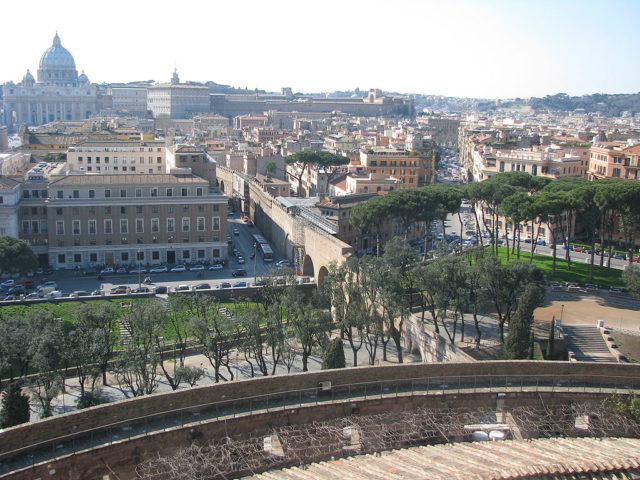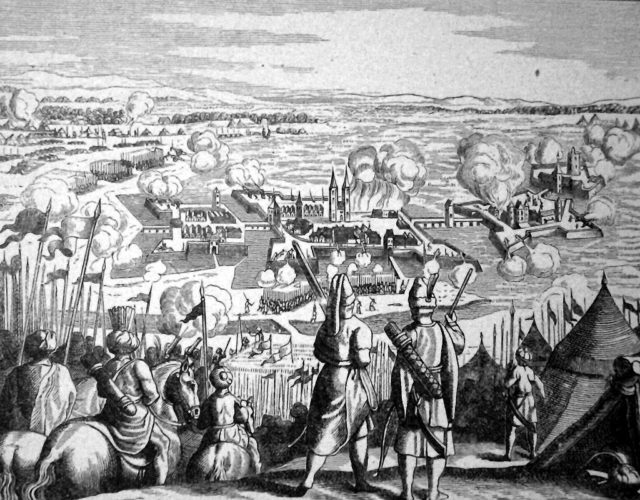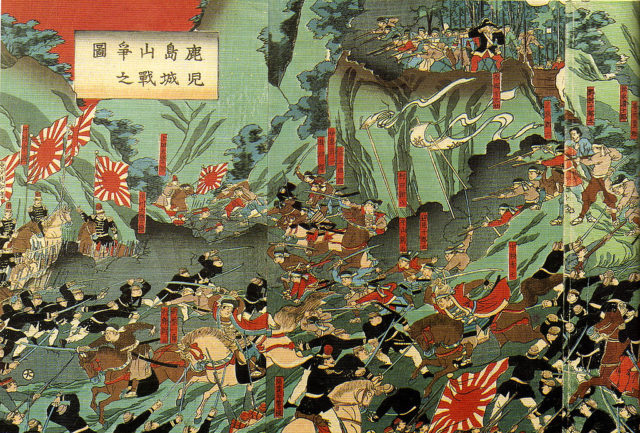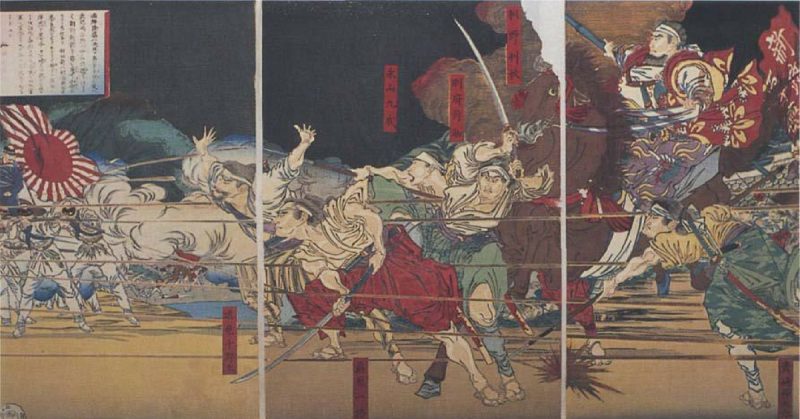The Battle of Thermopylae is the ultimate example of a heroic last stand. The few mighty warriors stood against hundreds of thousands of Persian troops, fighting to the death to give their fellow Greeks time to escape. The stand helped unify the Greeks against the Persians and has been well remembered for thousands of years.
But that is only one of many utterly heroic stands throughout history. Here are a few more examples of heroic last stands. Thermopylae and a few other impressive stands are covered in this article.
3. Swiss Guard Fights to the Death to Save the Pope
The Swiss guard of the Pope has had a long and eventful history. The Swiss were well-known mercenaries, prized for their fierce loyalty. The Swiss guard that served the Pope were among the most elite mercenaries of their time, viewing the defense of the Bishop of Rome with the utmost importance.
The loyalty of the Swiss guard was tested during the 1527 sack of Rome. When Pope Clement VII sought to change his alliance from the Holy Roman Empire to the French, an Italian War ensued. The Holy Roman Empire prevailed in northern Italy but the largely Lutheran mercenary force had yet to be paid. They threatened to mutiny unless they could sack and plunder Rome.

Many Lutherans of this period saw Rome and the Pope as targets, symbols of everything oppressive and wrong with Catholicism
Rome, as a holy city, did not have much of a garrison. It was largely considered off-limits to the other Catholic States. The citizens and militia mustered a defense of about 5,000 men against 20,000 professional troops. The city was quickly stormed and the Vatican targeted. The 189 Swiss guards stood their ground against the thousands of attackers.
This stand gave the Pope and his entourage time to escape across the Passetto di Borgo. This is a unique 800-meter long elevated path to the Castel Sant’ Angelo. About forty Swiss guards escaped from the stand to stall the attackers again at the entrance of the pass. A few of these guards survived the next waves of attackers and were able to rejoin and defend the Pope in the castle.
Though the majority of the guard were killed, including their captain, they managed to stave off the bloodthirsty Lutheran mercenaries just long enough to get the Pope to safety. This loyalty ensured that the Swiss guard would remain the Pope’s bodyguard all the way to the modern day.
2. Siege of Szigetvar: Ottoman Sultan’s Vienna Campaign Goes up in Smoke

In the mid-1500’s Europe was still filled with fear of Ottoman domination. Suleiman the Magnificent had had a long and largely successful career leading the Ottoman expansion on land and sea. Just into his 70’s, Suleiman went on one more campaign to take Vienna.
Before he got to Vienna, Suleiman became sidetracked by Count Zrinski and his fortress at Szigetvar. Zrinski had had a lot of recent success in border fights and was a veteran of the decades of fighting. Zrinski faced a force of about 150,000 Ottomans who were assembled to take Vienna. Suleiman expected to quickly crush Zrinski and his 3,000 defenders at the modestly-sized fortress.
As the Ottoman advance guard arrived at the fortress, a quick sortie by Zrinski inflicted devastating casualties before the main siege was even begun. The next week, Suleiman ordered a full assault. Tens of thousands of Turkish forces stormed the walls, but the well-run defense repulsed every attack.
After a month of combat that saw the secret death of Suleiman by natural causes, the Ottoman commanders were ready for one last assault. The walls were all but destroyed by constant bombardment and undermining, so Zrinski knew that another successful defense wasn’t going to happen.
Rather than wait for death, Zrinski lit a slow burning fuse that led to the massive stockpile of powder under the fortress. He then led the small force he had left and charged out to a glorious death in battle.
As the Ottomans flooded the fortress to gather up all the loot they could, the massive bomb exploded, killing another 3,000 men on top of the 20-30,000 men killed from fighting or disease.
The hard siege combined with the death of Suleiman made the Ottoman army turn back before reaching Vienna, again keeping Ottoman influence from creeping into the rest of Europe.
1. Shiroyama: The Last Charge of the Samurai

If you have ever seen The Last Samurai with Tom Cruise, then you have seen the highly fictionalized version of this battle. The period of the mid to late 1800’s was known as the Meiji Restoration in Japan, a time of rapid uptake of previously unknown modern technology and cultural influence. Many of the Samurai were quite against this change.
A series of rebellions were launched against the new modern government and each one crushed. The final and one of the largest was the Satsuma rebellion, led by Saigo Takamori. Saigo led schools of military and academic training and essentially created his own highly trained Samurai army, though many lacked the most modern firearms and some fought in a traditional manner with bows and swords.
Saigo was barely surviving for most of the rebellion. After nearly taking a castle, an imperial relief army chased his forces away. Several times the imperial army nearly surrounded the rebels, but each time they escaped. The battles saw as many, or more, casualties suffered by the Imperial troops as by Saigo’s men, though the Imperial troops had far superior numbers.
Eventually, Saigo and his thinned group of about 3-500 samurai were bottled up at Shiroyama. The Imperial commander ordered an elaborate and series of ditches dug, to finally trap Saigo in his elevated position. As the imperial forces advanced, Saigo and his men charged down to fight in melee. The ensuing battle almost sent the imperial troops fleeing, as the samurai were far superior swordfighters, but sheer numbers sent the Samurai back up the hill.
Saigo was mortally wounded and honorably beheaded by his closest friends. The remaining samurai, about 40 or so, charged back down the hill to their deaths. The rebellion and deaths of the samurai were seen as a great tragedy but the Japanese public and Saigo received a posthumous pardon by the Emperor, but the eventual success of the lower-class imperial army all but erased the samurai class.
